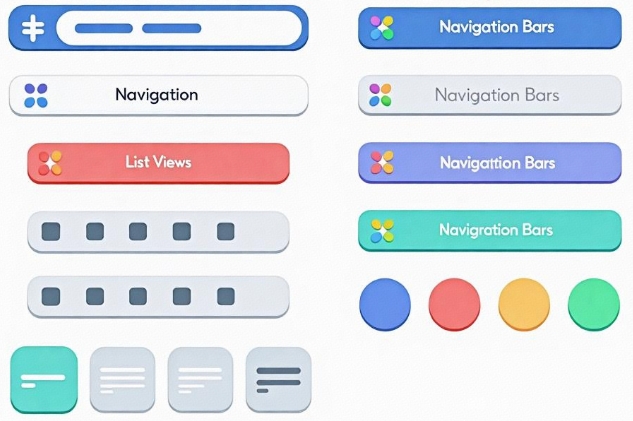Cross-Platform Support and Adaptation Techniques in Mini-Program Development
- latest articles
- 1.DApp Development & Customization: Merging Diverse Market Needs with User Experience 2.Analysis of the Core Technical System in DApp Project Development 3.How to achieve cross-chain interoperability in Web3 projects? 4.How does the tokenization of points reconstruct the e-commerce ecosystem? 5.How to Set and Track Data Metrics for a Points Mall? 6.What is DApp Development? Core Concepts and Technical Analysis 7.Inventory of commonly used Web3 development tools and usage tips 8.Development of a Distribution System Integrated with Social E-commerce 9.Six Key Steps for Businesses to Build a Points Mall System 10.What is DApp Development? A Comprehensive Guide from Concept to Implementation
- Popular Articles
- 1.Future Trends and Technology Predictions for APP Development in 2025 2.Analysis of the DeFi Ecosystem: How Developers Can Participate in Decentralized Finance Innovation 3.From Zero to One: How PI Mall Revolutionizes the Traditional E-commerce Model 4.DAPP Development | Best Practices for Professional Customization and Rapid Launch 5.Recommended by the Web3 developer community: the most noteworthy forums and resources 6.From Cloud Computing to Computing Power Leasing: Building a Flexible and Scalable Computing Resource Platform 7.How to Develop a Successful Douyin Mini Program: Technical Architecture and Best Practices 8.Shared Bike System APP: The Convenient Choice in the Era of Smart Travel 9.How to Create a Successful Dating App: From Needs Analysis to User Experience Design 10.From Design to Development: The Complete Process of Bringing an APP Idea to Life
In recent years, with the continuous development of internet technology, mini-programs, as lightweight applications, have gained widespread attention and adoption. With advantages such as ease of development and no need for download and installation, mini-programs have become one of the mainstream application forms on various platforms. However, with the diversification of platforms and the constant updating of devices, achieving good adaptation across multiple platforms has become a significant challenge in mini-program development.
I. The Need for Cross-Platform Development of Mini-Programs
The main advantage of mini-programs lies in their ability to be used without installation, and cross-platform capability is a key factor in their success. Currently, mainstream mini-program platforms include WeChat Mini-Programs, Alipay Mini-Programs, Baidu Mini-Programs, and ByteDance Mini-Programs, among others. Although these platforms have similar functionalities, their technical architectures and limitations differ, requiring developers to consider these differences during development to ensure stable operation across various platforms.
When developing mini-programs on these platforms, developers face several major challenges:
Platform Differences: Variations in API interfaces, components, and lifecycles across different mini-program platforms pose considerable challenges for developers.
Device Diversity: Since mini-programs need to support devices of different models and resolutions, ensuring consistency in interface and functionality across various devices is a critical task in development.
User Experience Consistency: Although mini-programs run on different platforms, users have high expectations for a consistent experience. Developers must ensure smooth operation and uniform interfaces across platforms.
To effectively address these challenges, developers need to master certain cross-platform development techniques and perform appropriate adaptation work during the development process.
II. Adaptation Techniques in Cross-Platform Development
Cross-platform mini-program development is not achieved overnight; it requires developers to use appropriate tools and techniques to resolve differences between platforms. Below are some common adaptation techniques for mini-program development:
1. Using Cross-Platform Development Frameworks
When developing for multiple platforms, using cross-platform development frameworks is undoubtedly an effective solution. Common cross-platform frameworks include Taro, UniApp, and MpVue, which help developers quickly achieve cross-platform adaptation.
Taro: Taro is an open-source cross-platform mini-program framework developed by JD.com. Based on React, it supports multi-platform adaptation, including WeChat, Alipay, Baidu, and ByteDance. By writing code once, Taro can compile it into code adapted for different platforms, significantly reducing development costs.
UniApp: UniApp is a cross-platform mini-program development framework based on Vue.js, supporting development for multiple platforms such as WeChat, Alipay, Baidu, and ByteDance. With a rich set of plugins and components, UniApp helps developers quickly achieve cross-platform adaptation.
MpVue: MpVue is a mini-program development framework developed by Meituan, based on Vue.js, and supports development for platforms like WeChat, Baidu, and Alipay. Using Vue's syntactic sugar, it allows developers to develop mini-programs more conveniently.
The advantage of these frameworks lies in their ability to adapt to multiple platforms through a unified codebase, allowing developers to focus on implementing business logic without writing separate code for each platform.
2. Component-Based Development
The UI of mini-programs is typically composed of multiple components, and UI component libraries vary across platforms. To achieve better cross-platform adaptation, adopting a component-based development approach is crucial.
The core idea of component-based development is to break down a mini-program into multiple independent components, each with its own functionality and state. This allows developers to reuse components across different platforms without redesigning the interface.
In practice, developers can use conditional compilation and adaptation layers to ensure component compatibility based on the characteristics of different platforms. For example, since WeChat and Alipay mini-programs have differences in page layout and component styles, developers can handle these variations through conditional compilation.
3. Using the Adapter Pattern
The adapter pattern is a common software design pattern that converts incompatible interfaces into compatible ones through an adapter. In cross-platform mini-program development, this pattern is often used to address inconsistencies in API interfaces.
For example, WeChat and Alipay mini-programs differ in certain API interfaces, such as page navigation and storage operations. Developers can encapsulate adapters to provide a unified interface for different platforms, ensuring code compatibility.
This approach helps minimize the impact of platform differences on the code and improves code maintainability.
4. Responsive Design
On different devices, screen sizes, resolutions, and aspect ratios may vary. To ensure that mini-programs display well on all devices, responsive design has become an essential development technique.
The core of responsive design is using CSS media queries to adapt to devices with different screen sizes and resolutions. In mini-program development, conditional statements like wx:if and wx:elif can be used to dynamically adjust the interface layout based on device type and screen resolution, providing a more flexible adaptation method.
For instance, developers can set different layouts based on the device's screen width or adjust image display sizes according to the device's resolution, ensuring consistent display effects across various devices.
5. Compatibility Testing
To ensure that mini-programs run stably across different platforms and devices, compatibility testing is an indispensable step. Developers should regularly conduct multi-platform testing during development to verify that each functional module operates correctly on all platforms.
In addition to traditional manual testing, automated testing tools can be used to improve testing efficiency. For example, Taro's automated testing tools can be employed for functional, performance, and UI testing of cross-platform mini-programs.
III. Summary and Outlook
As a new form of application, mini-programs face many challenges in cross-platform adaptation. However, by leveraging techniques such as cross-platform development frameworks, component-based development, the adapter pattern, and responsive design, developers can effectively address platform differences and device compatibility issues, thereby enhancing the user experience.
With continuous technological advancements, tools and frameworks for cross-platform development will continue to improve. In the future, cross-platform development is likely to become more convenient and efficient, offering developers more choices and possibilities. Additionally, with the development of technologies like 5G, AI, and the Internet of Things, cross-platform mini-programs will encounter more application scenarios and opportunities.
In this context, developers need to continuously learn new technologies and enhance their development skills to secure a place in the field of mini-program development.
-

How to Increase User Stickiness and Activity Through Mini Program Development
With the development of the internet and mobile internet, mini-programs, as an e···
-

How can mini-program development assist in corporate marketing and e-commerce transformation?
In today's rapidly evolving mobile internet landscape, corporate marketing and e···
-

Offline Functionality Design and Data Synchronization in Mini-Program Development
With the rapid development of mobile internet, mini-programs, as a lightweight a···

 Blockchain
Blockchain












